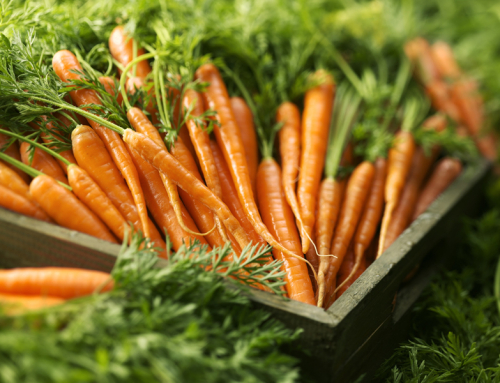- 1 cup, chopped (approx. 120 g) – 785 calories
- 1 oz, 14 halves (approx. 28 g) – 185 calories
Walnuts have been used since ancient times for their many health benefits. These edible kernels were believed to symbolize the intellect, as their appearance closely resembles that of the human brain. From the genus Juglan of the Juglandaceae family, these medium-sized trees originated in the region surrounding central Asia or southern Europe.
Basic Information
While there are approximately 30 different types of walnut species throughout the world, only about 3 varieties are grown for their commercial value. These types are the English walnut, also referred to as the Persian walnut, the black walnut, and the white walnut, also known as the butternut walnut. These varieties are commercially grown in the United States, China, France, Romania, and Turkey. Growers can generally expect to harvest in August when the green outer hulls begin to crack, exposing the light brown shell that is familiar to most consumers.
Nutritional Components of Walnuts
Walnuts are a good source of energy, containing approximately 654 calories per 100 grams. Containing monounsaturated fats like oleic acid and omega-3 essential fatty acids, just 25 grams of these nuts can provide about 90% of the recommended daily intake for a variety of omega-3s, including alphalinolenic acid, linoleic acid, and arachidonic acid. These tasty little kernels also contain a variety of phytonutrients, vitamins, and minerals to enhance overall health and to provide antioxidant benefits to the body.
Health Benefits
- Cardiovascular Disease
The monounsaturated fats protect against inflammation, helping to reduce blood pressure, lower LDL cholesterol, and increase HDL cholesterol. This can help to reduce harmful cholesterol buildup along arterial walls, lessening the potential risk for heart disease and stroke. Powerful antioxidants protect against damage, while vitamins and minerals help to strengthen the walls of arteries and make them more flexible. Amino acids help to increase blood flow to all areas of the body. - Cancer
The anti-inflammatory and antioxidant benefits of walnuts help to reduce the risk of chronic inflammation and oxidative stress. This can offer protection against certain types of cancer, such as that of the breast, colon, and prostate. - Bone Health
Essential fatty acids, vitamins, and minerals in walnuts can enhance bone health by strengthening bones and reducing mineral loss that can lead to other conditions such as osteoporosis. - Metabolic Syndrome
The healthy fats in walnuts have been shown to reduce cholesterol and lower the accumulation of fat in the abdominal area associated with metabolic syndrome. This may help to reduce the risk of further problems associated with this syndrome, such as cardiovascular disease. - Central Nervous System
Certain components such as melatonin, carotenoids, ellagic acid, polypheloic compounds, and Vitamin E can help with proper brain and nerve functions while protecting against neurological disease. These nutrients help to promote memory, improved sleep, and enhanced cognitive processes. - Premature Aging
Powerful antioxidants in walnuts, especially the minerals manganese and copper and the popyphenolic antioxidant Trolex equivalents can defend against oxidative damage. Vitamin E protects mucus membranes and skin, effectively preventing signs of premature aging. - Other Benefits
Walnuts contain nutrients that are important for growth, digestion, and sperm development. Applied topically, oil derived from walnuts can help to prevent and treat dry skin.
Culinary Uses for Walnuts
These kernels are great to eat by themselves as a snack to help to stave off hunger between meals. You may choose to enjoy them raw, salted, roasted, or even sweetened. However, there are many ways to add walnuts to your diet every day.
Baking: Add these nuts to your confections and baked goods, such as cakes, muffins, cookies, breads, and candies.
Toppings: Use walnuts are a topping for yogurt, hot and cold cereals, and salads to add texture, flavor, and nutrients to your basic dishes.
Add-ins: You can increase the nutritional value and enhance flavor of side dishes, such as vegetables or rice, when you add chopped or whole walnut pieces.
Dips and spreads: If you grind walnuts alone or with other ingredients, you can make a variety of healthy spreads and dips to enjoy with snacks or as a part of your meal.
How to Choose and Store Walnuts
You can find walnuts all year long at stores in a variety of forms, either shelled or unshelled. Shelled varieties may be salted, roasted, or sweetened, whole, chopped, or ground. Unshelled walnuts are preferable over the processed, shelled versions as the nuts may lose some of their potency when exposed to air. Choose those nuts with bright, even-colored shells that feel heavy for their size and show no signs of cracks, piercings, or other spots, and those that do not smell rancid. Choose processed nuts that have no spots, do not smell rancid, and show no signs of spoilage.
You can store nuts in their shells in a cool, dark area or in the refrigerator for up to six months. Shelled varieties should be stored in an airtight container in the refrigerator for up to six months or in the freezer for up to one year.
Allergy Concerns
Like other tree nuts, walnuts may cause allergic reaction in certain individuals. Symptoms may be immediate and severe or delayed and milder. Signs of allergic reaction may include swelling of the tongue, lips, and throat, breathing difficulties, abdominal pain, nausea, vomiting, rash and other skin problems, congestion in the chest or nasal passages, dizziness, fatigue, depression, insomnia, and bowel disturbances. If you have an allergy, avoid walnuts and any food or beverage that may contain this nut.












